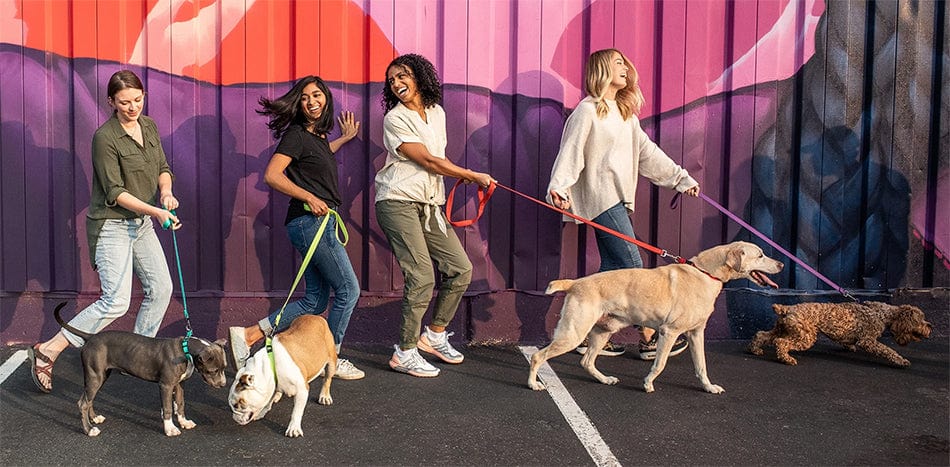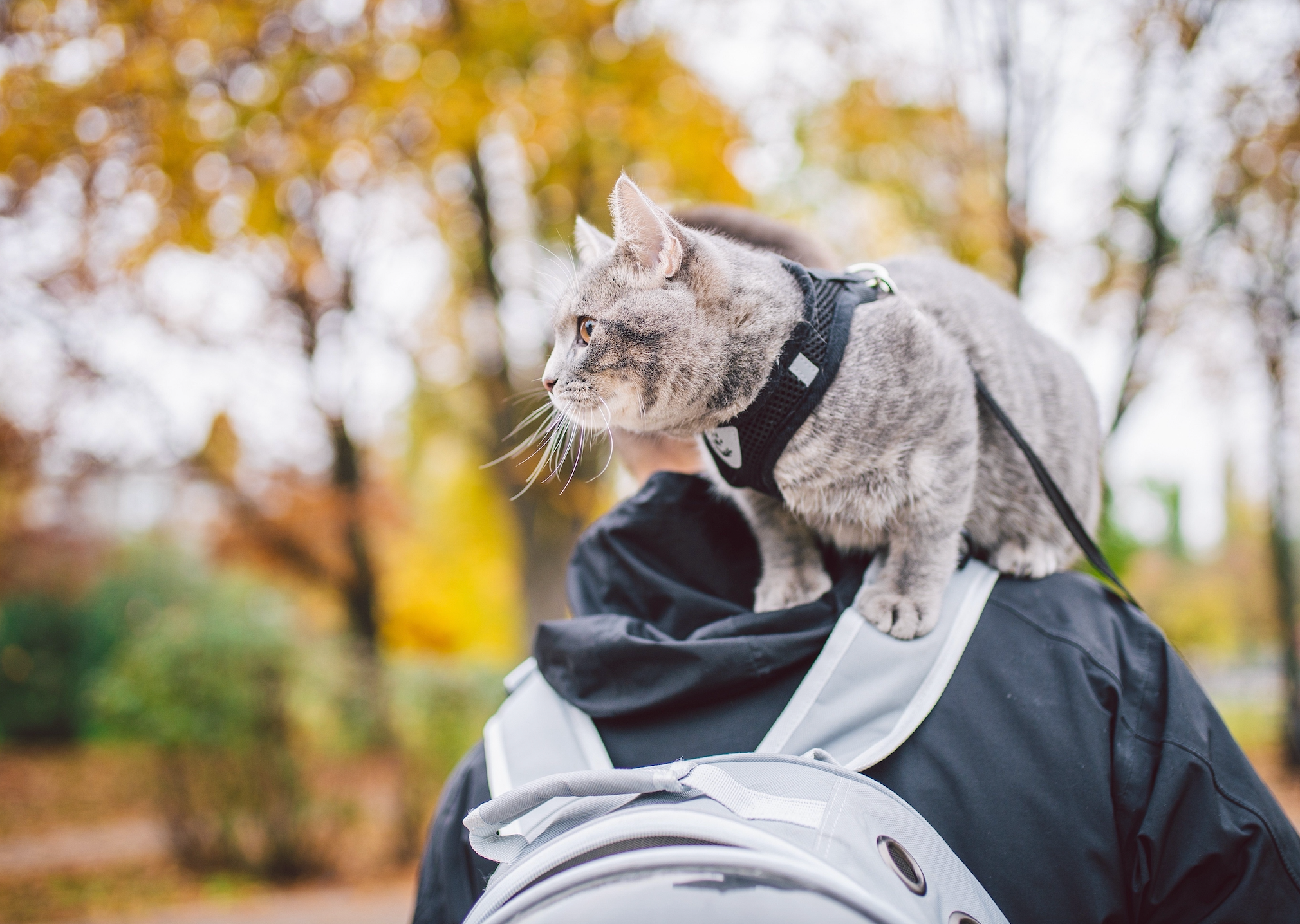Do you daydream about taking your cat on hikes with you? If your kitty turns into a limp noodle as soon as you put a harness on them, don’t fret. There’s hope for you and your adventure cat!
How to Pick the Best Harness for Your Cat
First things first, you’ve gotta find the right cat harness and leash. Cats are notoriously slippery escape artists, so finding the perfect fit might be a little more complicated than picking up a dog collar. We’re here to help make the process much easier and prevent Houdini-style disappearing acts down the road.
The 3 Styles of Cat Harnesses
Most cat harnesses can be sorted into three basic styles, and each has their pros and cons. Before you click “buy” on your online cart, you’ve gotta know the difference between a cat vest and jacket!
-
H-harnesses: These cat harnesses are made from thin straps like a cat collar but wrap around the chest and shoulders. The minimal coverage makes them good for hot weather and easy to layer with clothing in cold weather, but they are the easiest to wriggle out of. The lightweight feel might make this style easier for a newbie cat to get used to.
-
Vest harnesses: Vest-style cat harnesses have wide, padded straps that wrap around the cat’s chest and shoulders. They may slip over the head or be a step-in harness that clips closed over the shoulders. Soft mesh materials are ideal for their breathability since thickly padded harnesses can cause cats to run hot in the summer sun. Cat vest harnesses are a comfortable and versatile harness option.
-
Jacket harnesses: A jacket cat harness (also known as a kitty holster) is the most full-coverage harness style, covering your cat like a shirt or jacket would. That coverage helps to provide the most secure fit and usually includes several adjustment points with velcro—perfect for the wiggly cat in your life. On the other hand, that does make them harder to adjust to for touch-sensitive cats or cats who don’t like the loud noise of velcro. The full-coverage fit also means they can be stifling in hot weather.
Finding the Right Fit
Finding a harness your cat actually likes can take some trial and error, but there are some things you can look for in a harness to make sure the only problem is your picky cat—as usual.
- Measure your cat! Getting a tape measure around a cat can be tricky, but worth it! Matching your cat’s measurements to the product description will get you the best fit.
- Look for multiple adjustment points to customize the fit.
- Your cat will appreciate a harness that’s easy to put on. Many cats prefer a harness they can step into instead of one that has to go over their head.
- Safety first—make sure that all clips, clasps, and latches are secure.
- Opt for safety features like reflective material and bells to make sure your cat is seen and heard.
- Buy a harness that’s designed specifically for cats. Some companies will repackage small dog harnesses for cats (sneaky!), but they won’t fit your cat’s body correctly. Look for brands that are transparent and specific about how they design their cat harnesses.
How to Train Your Cat to Use a Harness
This might be the hardest step of the process, but on the bright side, it’s very funny to watch your feline friend go boneless when you try on their harness for the first time. Whether your cat is a drama queen about the whole thing or they actually take to the harness, it’s a good idea to use some positive reinforcement to get your cat comfortable in their walking vest. Here’s how to get started.
-
Start putting the harness on indoors. Clip your cat in and then shift your attention to giving them some tempting treats and playing their favorite games. The goal is to get them distracted from the weird thing on their body and focused on the stuff they love. Start with short sessions until your cat becomes more comfortable.
- Add a lightweight leash. This is the time to teach your cat the boundaries that come with being leash-bound. You two have graduated from a metaphorical attachment at the hip to a literal one.
- Start venturing outdoors! Bring a cat carrier they’re comfortable in so they have a safe place to retreat to. Start in small, enclosed areas like a fenced in backyard and expand from there as they become more comfortable.
- Introduce new locations a little at a time. If your cat seems ready, you can graduate from your backyard to going around the block to hitting the local park. With a little patience, you can have your cat by your side as you hit your favorite trail. Keep bringing a carrier or pack with you on your outdoor adventures so your adventure kitty always has a safe hiding place they can come back to.
Most importantly, always keep a close eye on your cat’s body language to make sure your cat is happy. Outdoor exploration is great enrichment for cats, but not every cat wants to climb Everest, and that’s okay! Having a good relationship with your cat is all about understanding each other’s boundaries—and thankfully most cats are better at boundaries than people are.

